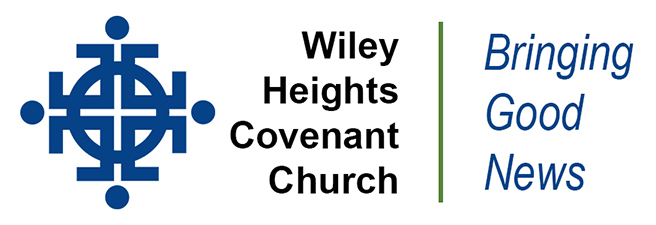History of the Mission Church
It seems that wherever the Swedes have moved they always brought their church along. And so it happened in Yakima, Washington.
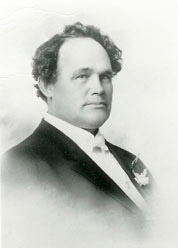
Four miles north of the city of Yakima there was already a Covenant church established in the town of Selah. The first past in 1920, Rev. David Swanson, is pictured at the right. A few Covenant families from the Midwest settled twelve miles west of Yakima on a ridge, later known as Wiley Heights. The name was derived from Wiley City, a small community in the vicinity.
How these friends found their way to Wiley Heights is of interest. The story begins with a prolonged strike in the building trades in Chicago toward the end of the nineteenth century. Two young men, Fridolf Nelson and Fingal Gothberg, both members of the Tabernacle Church, 30th and LaSalle, Chicago, were idled by the strike. A different strike, the “Gold Strike” at Nome, Alaska, attracted them, and there they went and found work with high wages. When they did not work for wages they did some prospecting. They never became millionaires; neither did they lose their religion.
When they had enough money for some business venture in the States, they left Alaska for Seattle, Washington. Here they heard of the land boom in Yakima and of the Tieton Reclamation Project just being completed. Together with a third Alaska friend, Mr. Stevenson, they formed the Jupiter Investment Company and bought some land on Wiley Heights suitable for orchards now as irrigation water became available. By advertising this land in the Swedish language “Missions Vannen”, our church became what might be called a Covenant “mail order church”. Members from our churches in Omaha, St. Paul, Chicago, and other places settled in Wiley Heights and automatically a Covenant church resulted.
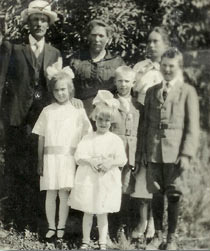
The August Dahlin family from St. Paul, Minnesota, were among the first to locate here and with several children of their own started a Sunday School in the summer of 1911 with an enrollment of ten. In February 1915, a Ladies Aid Society was organized with twelve members, and on the 15th day of September 1915, the church was organized in the home of Mr. and Mrs. August Dahlin with the Rev. David Swanson of Selah, Washington as chairman. The charter members were:
Mr. and Mrs. August Dahlin, Mr. and Mrs. Israel Anderson, Mr. and Mrs. Nels Nystrom Mr. and Mrs. L.M. Nystrom, Miss Ruth Nystrom and Mr. and Mrs. Fingal Gothberg.
Up to this time the work was more of a community nature and three or four families of the Augustana Lutheran Church in Yakima participated, as they lived in the community. The Yakima Lutheran church also maintained a chapel here for Sunday afternoon services and owned one acre corner lot.
As more Covenant families moved in, the need for a church building was felt, and in October 1916 it was decided to build. Nels Nystrom, then treasurer and an experienced builder, was appointed architect and supervisor for the project. Mr. Henry Carlson donated a centrally located lot out of his orchard, and the Jupiter Investment Company donated the stained glass windows. Friends in the Omaha Covenant Church donated $300.00, and with a loan of $250.00 from the North Pacific Conference to which the church was united, the work proceeded rapidly.
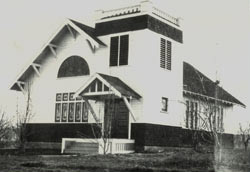
Most of the men were carpenters and all work was donated. The beautiful little church, nestled in the apple orchards was completed and finally dedicated free of debt on July 25, 1920. Two years later a Young People’s Society was organized, thus completing the church organizations.
The former missionary to China, Mr. N. Gothberg, had for a number of years served as pastor of the church without pay and continued in that capacity from 1920 to 1929 with some remuneration. The church was from the beginning fortunate in having plenty of talents for its work. For Sunday School superintendents we had such experienced men as August Dahlin, L. M. Nystrom and later when the switch to the English language took place, Mr. Olaf Lawrie. The preaching services continued in the Swedish language as long as Mr. Gothberg was in charge except for one service a month when English was used. For many years Miss Marie Torell served as organist and choir leader. Her talents in this field had been appreciated in the Omaha Covenant Church years before she followed her family to Wiley Heights.
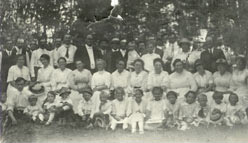
Nineteen hundred twenty-nine marked a new epoch in the church’s history. Mr. N. Gothberg resigned as pastor to give his time to his fruit farm, and Rev. Milton Opsahl, a graduate of the Moody Bible Institute, accepted a call to the pastorate. This meant that the English language became the accepted language of the church except for our adult class in the Sunday School. This change was timely and opened a wider field of influence.
Rev. Opsahl and his family stayed only two years, and the church remained without a resident pastor for some years. The church was not without services, however. Through agreement with the Selah Covenant Church, Rev. Pihlstrom visited Wiley Heights with a service on Sunday afternoons. From the very start we were favored with regular visits from the two home missionaries on the North Pacific Conference's field, Rev. Axel Anderson, "Sunshine Anderson", and Rev. M.E. Anderson. Mr. R.S. Kelly, a Yakima business man and lay preacher, was also often and gladly heard in the church.
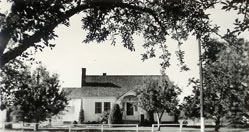
That a resident pastor was necessary for the future work of the church was well agreed to by all members, and in spite of the prevailing depression, it was decided in 1936 to build a parsonage. Since the Augustana Lutheran Church had discontinued its chapel services in the community, the Covenant Church acquired title to its one acre property through mutual agreement between the two groups, and the parsonage was built on said property. In 1937 Rev. Arvid Johnson accepted the call to Wiley Heights and stayed on for three years. Rev. Irving Erickson succeeded him in 1941 and remained for three years. Rev. Carl Janson followed in 1945 to finish the third three year cycle of ministry. The present pastor, Rev. Raymond L. Johnson, began his ministry in 1949. In 1951 the church applied for full membership in The Evangelical Mission Covenant Church of America and was accepted.
By 1953, The church building had been enlarged to better house the Sunday school and young people’s work. The Sunday School had an enrollment of 145 with eleven classes. The Junior League had a membership of seventeen, Hi-League ten, Young People about fifteen, C.W.A. thirty four, Ladies Aid thirty four. Total church membership in 1953 was 104. The church property was valued at $30,000 in 1953.
Compiled by L.M. Nystrom, Nels Nystrom, and N. Gothberg
Written by request for the church record in October 1953, by N. Gothberg
